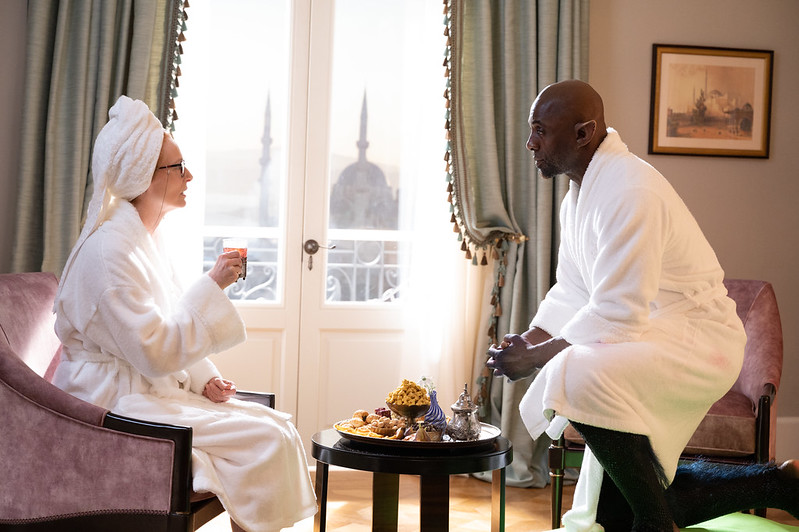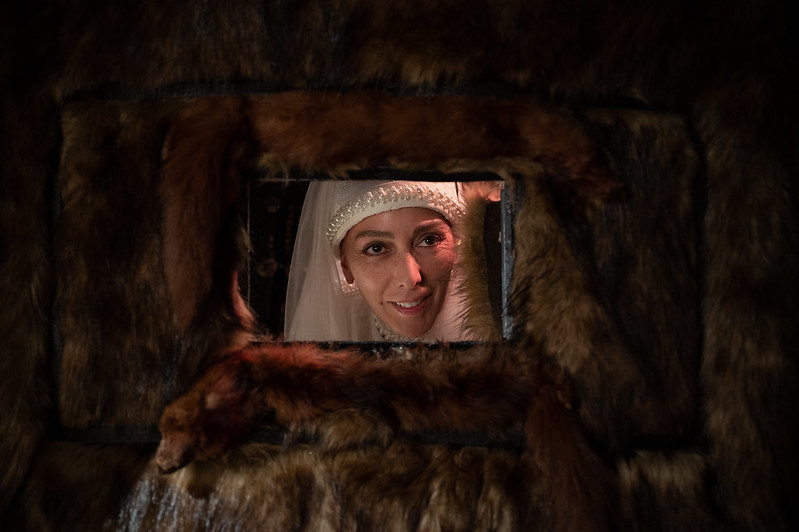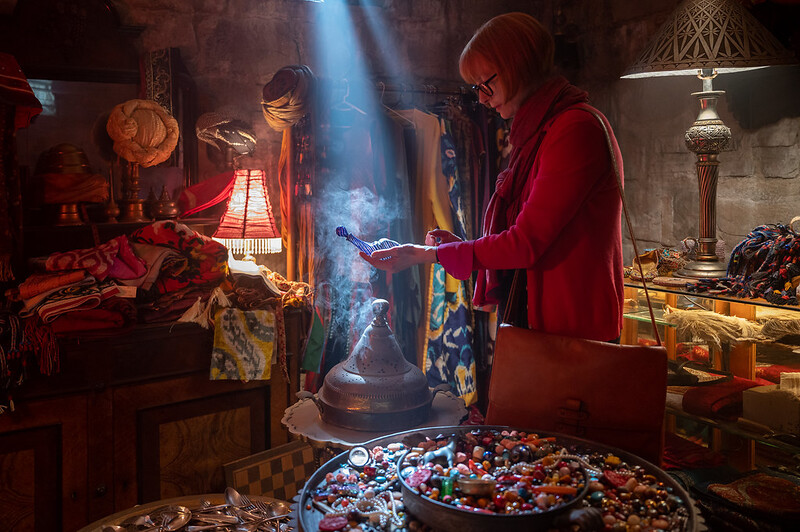
Three Thousand Years of Longing (2022) is a visually stunning story about storytelling, in which Dr Alithea (Tilda Swinton), a scholar of storytelling with frequent hallucinations, unleashes a Djinn (Idris Elba) from a bottle during a conference in Istanbul, and the pair sit around in bath robes in a hotel room telling each other stories — the Djinn to convince Alithea to make three wishes to set him free, Alithea wary of being tricked like in all the stories of Djinn and wishes.

It’s beautiful and weird and while I certainly enjoyed the concept of a human and a supernatural being sharing stories, did seem to get a little fuzzy and lost as the story went on. It almost certainly has a problem with exoticism, though I am not the right person to talk about that.
It also has some of the worst fatmisia I’ve seen in recent years, and I absolutely have the right to talk about that.
In the midst of the second of three tales of how he got trapped and released from a bottle, the Djinn describes a second prince locked in a room of concubines so that he can produce an heir and be kept safe. The prince develops a fetish for fat bodies and becomes fat himself. ‘My escape hinges on this fetish,’ the Djinn assures Alithea, thus giving screenwriter and director George Miller the room he needs to have repeated and lingering fatmisic shots as he develops the disgusting mythos of this fetish.
During this time, the prince devolves. Described as a baby, he does nothing but fuck and eat. When he sees his brother for the first time in years, he reaches for him with an arm slick with an unknown, viscous liquid — is it lubricant? Food? Ejaculate? — and the brother withdraws in disgust, deciding the second prince is unworthy of killing as a rival.

When, by no action of his own, the second prince ascends to the throne, he makes his fat concubines his advisors — senior among them ‘Sugar Lump’, the fattest concubine. If you thought perhaps this was due to some virtue or cleverness, we never find out. Sugar Lump’s only contribution to the story is to land so heavily on a stone slab that she reveals the hidden Djinn in a bottle and then casts it into the ocean.
This series of events hits every single fatmisic trope and stereotype with ringing clarity. To George Miller, to be fat is to be disgusting, gluttonous, fetishised, infantilised, and the only contribution a fat character can make to a story is a gag about how heavy they are. The only named fat woman is called “Sugar Lump”, for fuck’s sake. The second prince and his concubines are the only fat characters in the entire film and they are all of them treated as disgusting spectacles to add to the general and ongoing spectacle of the film. A little bit of horror to contrast with all the beauty, I imagine George Miller thought to himself. It was sickening to watch, not just because of the deliberately revolting framing, but because of the thought and intent behind it.
I have one of those fat bodies George Miller thinks are so hilarious, so disgusting. I am not a glutton or an infant. I do not (nor does anyone!) deserve to be fetishised. I can contribute more to the world than landing heavily on my fat ass.
And worst of all, from a storytelling perspective, is that the Djinn lied. His escape did not hinge on that fetish. He might have skipped the entire sickening storybeat entirely as it did not end with him being freed but waiting to be discovered by a thinner, more worthy mortal.

And from a broader storytelling perspective, it was completely irrelevant. The first story reveals the Djinn’s erotic offerings. The third story reveals the Djinn’s romantic offerings. The second story vaguely humanises the Djinn as someone trying to help — except, of course, for the part that deals with the fat prince and his concubines, undeserving of it.
These three stories are supposed to create the impetus that leads to Alithea wishing for the Djinn to love her. However, at the end of the three stories, Alithea excitedly states that she wants what he showed in those stories — and references only the first and the third. The second story was nothing but filler. The fat prince was nothing but spectacle.
I am sick of seeing fat people reduced to empty vessels for thin people to pour their hate and disdain into. It happens all across media. These tropes I’ve recounted here are not unique to Three Thousand Years of Longing, though this film seems almost to have gone out of its way to include as many harmful tropes as it could.
Media needs to do better. This affects how thin people see us. It affects how we see ourselves. It contributes to violence and prejudice against fat bodies.
If you are reading this and you are fat, I want to reassure you that this was wrong. That this was an unprovoked and cruel attack.
If you are reading this and you are thin, I want you to notice. I want you to be angry that fat people are treated this way. I want you to talk about how disgusting it is. I want you to push back!
Frankly, at the end of the film, whatever else I thought about the story, it was the fatmisia that stuck with me. Certainly, I felt that I had sat through three thousand years of it.
—
This post, like all my work, is made with thanks to my supporters on ko-fi. If you’d like to support my writing, streaming, and creation, please do consider tipping or getting a membership.
